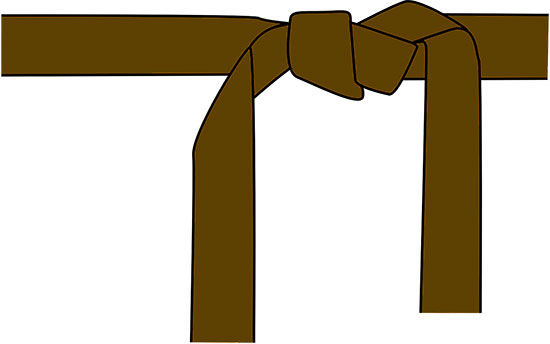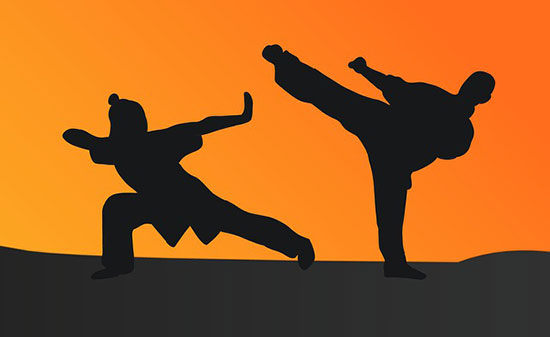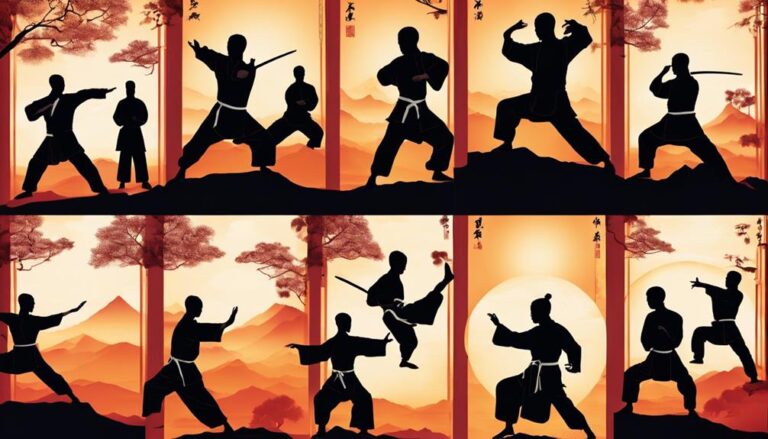Shaolin Kung Fu’s history is so vast, that it makes the Great Wall of China seem like a mere stepping stone in comparison.
You’re about to embark on a journey back in time, where the fusion of Indian martial arts with Chinese culture under the guidance of Indian monk Batuo and the legendary Bodhidharma crafted a legacy that’s as profound as it is ancient.
This exploration will not only reveal the philosophical underpinnings and intricate techniques that define Shaolin Kung Fu but also highlight the enduring cultural exchanges that shaped it.
So, stay tuned, as you’re on the cusp of uncovering how these ancient roots continue to influence modern practices and philosophical thought across the globe.
Contents
The Bodhidharma Legacy
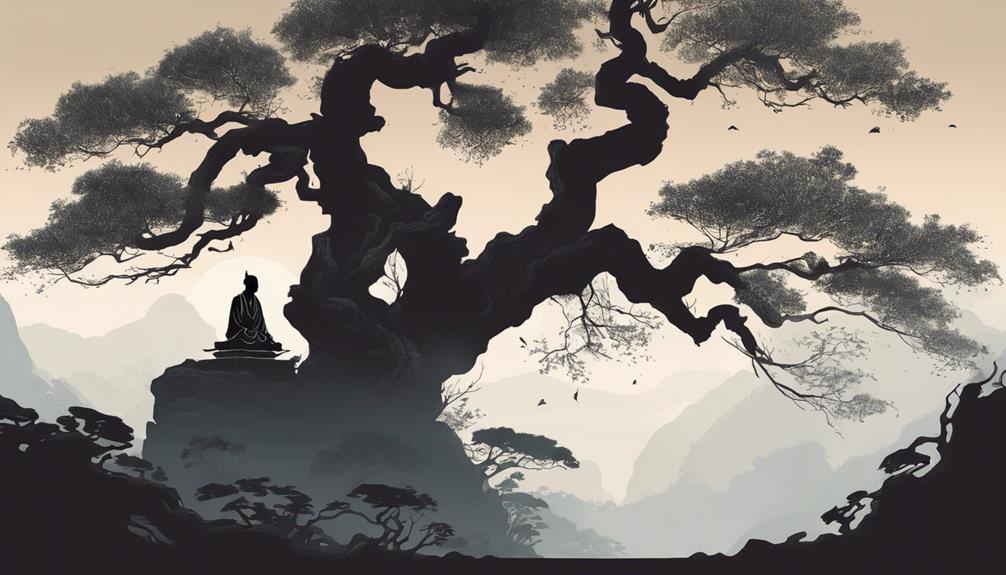
While exploring the ancient roots of Shaolin Kung Fu, it’s crucial to examine the pivotal role Bodhidharma, an Indian monk, played upon his arrival in China during the 5th or 6th century, as his teachings fundamentally transformed the Shaolin Temple’s approach to martial arts.
By introducing structured exercises and meditation practices, Bodhidharma blended Indian disciplines with Chinese martial techniques, fostering a unique synthesis that emphasized the unity of mind, body, and spirit. This holistic approach not only advanced the martial capabilities of Shaolin monks but also infused their practice with deep spiritual and philosophical elements.
Bodhidharma’s legacy at the Shaolin Temple marked a seminal moment, laying the foundational principles of mind-body-spirit unity that continue to define Shaolin Kung Fu’s philosophical and martial traditions today.
Shaolin Temple’s Evolution

Examining the Shaolin Temple’s evolution reveals a dynamic process of cultural synthesis, wherein Indian martial arts were intricately woven into the fabric of Chinese society, giving birth to the distinct martial art form known as Shaolin Kung Fu. Bodhidharma’s arrival at the temple marked a pivotal moment, introducing structured exercises and meditation that underscored the unity of mind, body, and spirit. This fusion not only enriched Chinese culture but also fortified the temple’s ability to defend its monasteries, reflecting its historical evolution.
| Factor | Influence | Outcome |
|---|---|---|
| Bodhidharma | Structured exercises & meditation | Unity of mind, body, spirit |
| Indian Martial Arts | Fusion with Chinese practices | Birth of Shaolin Kung Fu |
| Defense Needs | Historical challenges | Development of combat techniques |
| Cultural Synthesis | Indian and Chinese elements | Enriched Chinese culture |
Philosophical Foundations

Building upon the historical evolution of the Shaolin Temple, it’s crucial to explore how Buddhist philosophy, with its focus on balance, harmony, and inner strength, underpins the practice of Shaolin Kung Fu.
The philosophical foundations of Shaolin Kung Fu, deeply influenced by the Taoist concept of Yin and Yang, advocate for the equilibrium of opposites. This balance isn’t merely theoretical but is manifested through the rigorous discipline that emphasizes the unity of mind, body, and spirit.
Such holistic integration shapes the unique philosophical underpinnings of Shaolin Kung Fu, distinguishing it within martial traditions. This synthesis of philosophical teachings and martial prowess demonstrates a comprehensive approach, where Shaolin Kung Fu becomes a conduit for achieving harmony and inner strength, reflecting its significant philosophical heritage.
Styles and Techniques
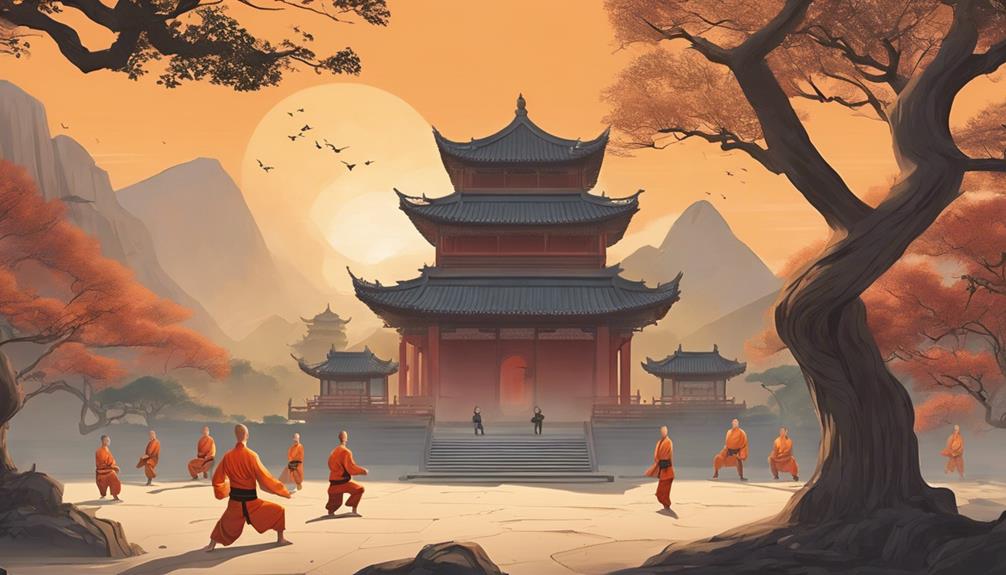
Delving into the styles and techniques of Shaolin Kung Fu, you’ll discover a rich tapestry of combat forms that intricately blend physical prowess with mental discipline. This Chinese martial arts tradition encompasses styles like Northern and Southern Fist, alongside Tiger, Crane, and Snake techniques, each emphasizing a unique aspect of martial prowess.
Techniques focus on a comprehensive approach combining striking, kicking, blocking, and grappling movements, aimed at maximizing combat effectiveness. Additionally, Shaolin Kung Fu incorporates the use of traditional weapons, including the staff, sword, spear, and broadsword, further enhancing a practitioner’s versatility and skill.
Central to its philosophy is the integration of these martial arts techniques with mental discipline and spiritual development, achieved through rigorous training in forms, sparring, self-defense applications, and qigong exercises. These ancient secrets underscore a holistic journey toward physical and mental harmony.
Global Influence and Legacy
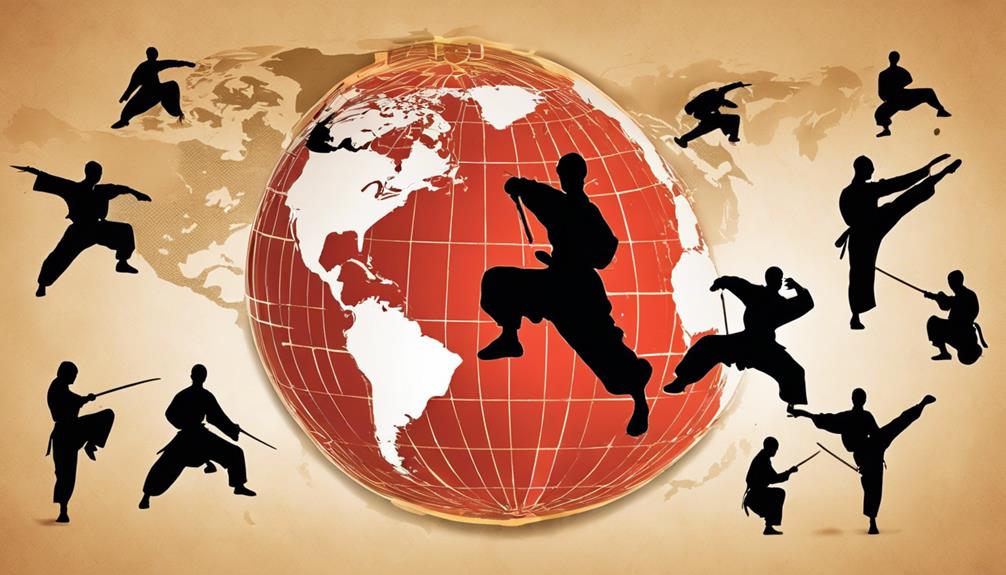
While exploring the styles and techniques of Shaolin Kung Fu reveals its intricate blend of physical and mental disciplines, it’s the art’s global influence and legacy that underscore its profound impact on martial arts worldwide.
This influence manifests in several key aspects:
- Cultural Exchange: Shaolin Kung Fu symbolizes historical connections and cultural exchanges, enriching martial practices across nations.
- Techniques and Philosophy: Its ancient roots have infused a diverse range of martial arts with Shaolin’s unique techniques and philosophical insights, promoting a deeper understanding and appreciation of martial disciplines.
- Diversity and Unity: The global spread of Shaolin Kung Fu highlights its role in fostering diversity within martial arts while simultaneously drawing practitioners together in unity, demonstrating the art’s enduring legacy and its capacity to bridge cultural divides.
Conclusion
In conclusion, Shaolin Kung Fu’s emergence as a pivotal martial art reflects a remarkable synthesis of Indian and Chinese cultural traditions, underscored by the influential legacy of Bodhidharma.
Its evolution from a spiritual discipline to a global phenomenon encapsulates the dynamic interchange of philosophical and physical insights across borders.
Through the adoption of diverse styles and techniques, including the emulation of animal movements, Shaolin Kung Fu epitomizes the profound interconnectedness of mind, body, and spirit, highlighting its enduring global legacy.
